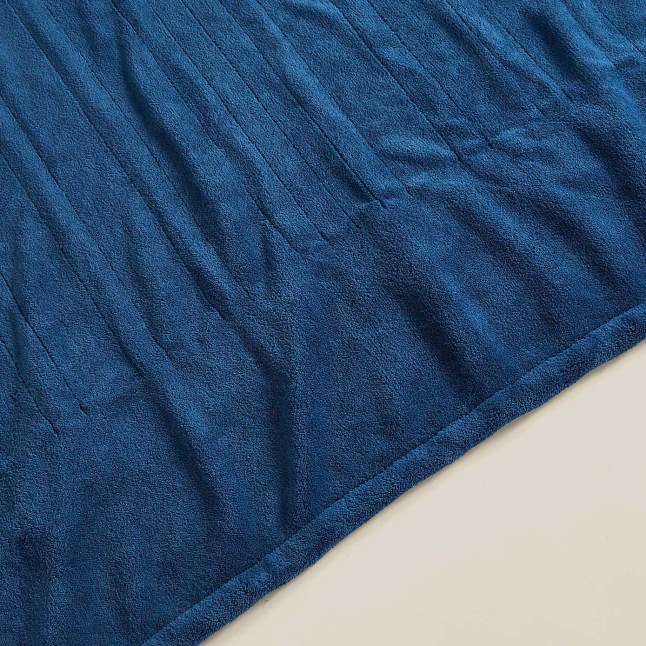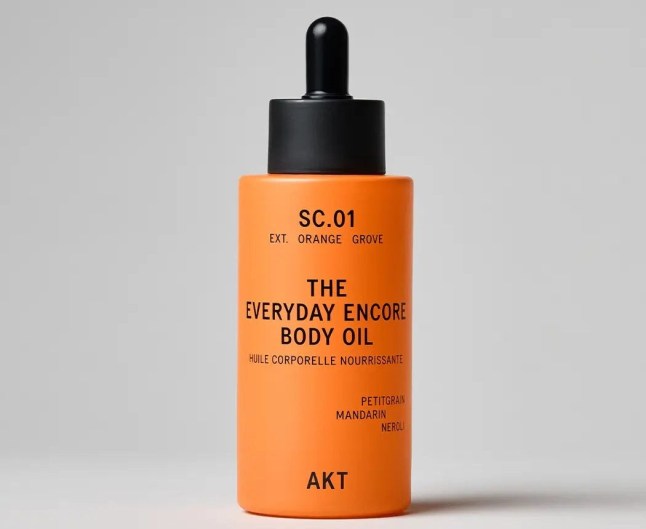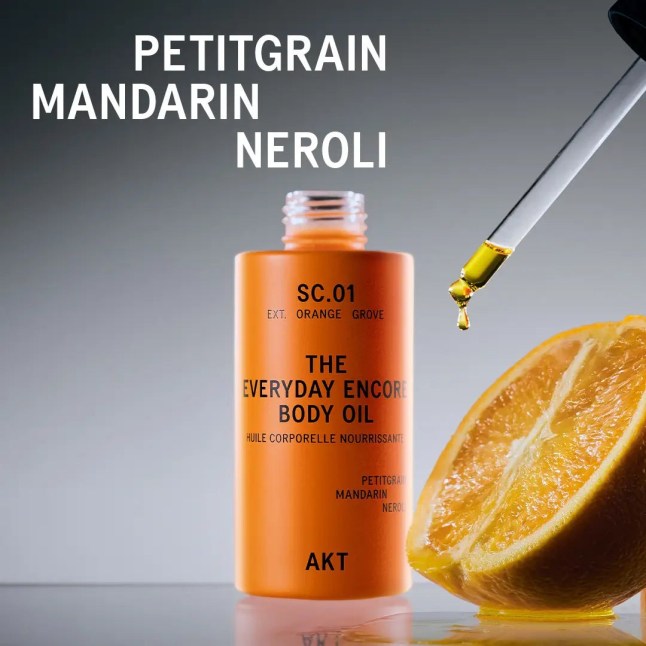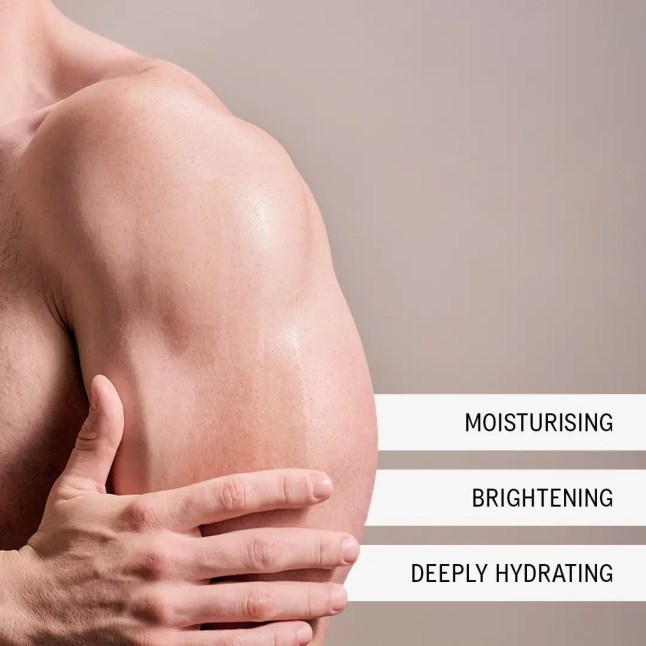11 Sep, 2025 | Admin | No Comments
Shoppers rave over ‘soft and cosy’ Dunelm heated blanket that costs just 2p an hour
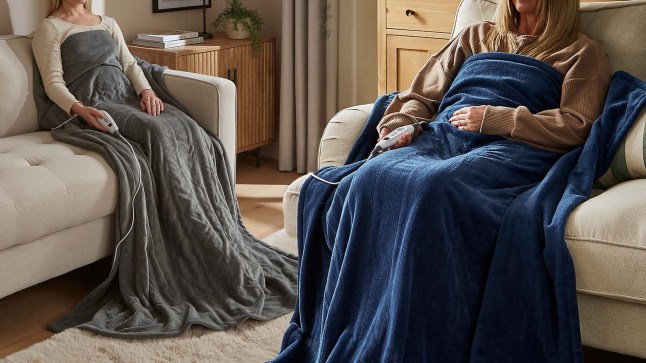
Metro journalists select and curate the products that feature on our site. If you make a purchase via links on this page we will earn commission – learn more
As energy prices continue to rise and temperatures start to dip with the arrival of autumn, many households are looking for smarter ways to stay warm without having to switch on the central heating.
After all, turning up the thermostat for even a few hours can quickly add up on your energy bill.
That’s where small, energy-efficient solutions like Dunelm’s Fleece Electric Throw come into their own.
Designed to deliver cosy warmth right where you need it, this electric throw is a practical and affordable alternative to heating the whole house.
Whether you’re curled up on the sofa watching TV or winding down with a book before bed, the super-soft fleece material and adjustable heat settings mean you can stay snug and comfortable without wasting energy.
Some might be surprised at just how cost-effective electric throws like Dunelm’s can be. It costs just 2p per hour to run but it does a brilliant job of keeping you warm, making it an great choice for anyone looking to cut back on heating costs.
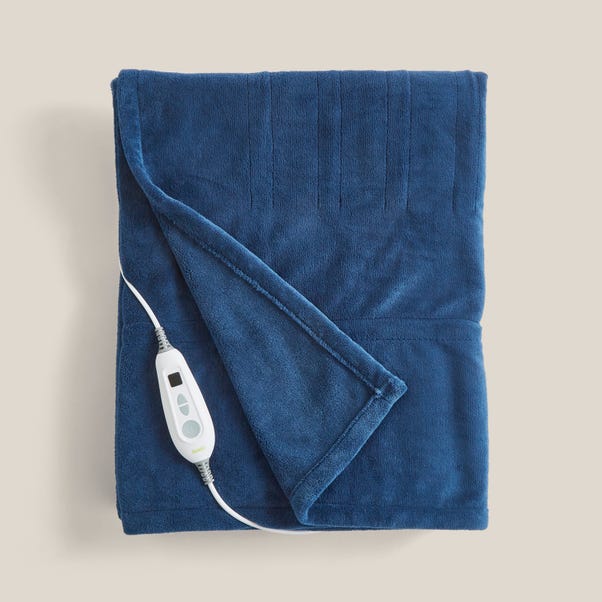
Fleece Electric Throw
Featuring 6 adjustable heat settings and a generous 130 x 160cm size, Dunelm’s Fleece Electric Throw is a practical and energy-efficient way to stay cosy during the cooler months.
Made from soft fleece and available in three colours: charcoal, navy and taupe, it heats up quickly and evenly. Plus, it’s machine washable, with a detachable controller for easy cleaning.
Featuring six heat settings and sized generously at 130 x 160cm, the £32 throw is one of the most affordable on the market and it’s backed by glowing reviews from happy customers.
One review from a shopper named Pam said: ‘Lovely soft luxurious throw, very warm even without the heat on, super cosy when it’s heated, washes well, very pleased with purchase.’
A review left by Jacqui reads: ‘So soft and cosy, keeps you lovely and warm on a cold winter’s day.’
And a rave review from Don said: ‘A very good electric throw heats up very quickly and is an excellent size. Looking forward to staying snug in the winter, I would recommend.’
It’s also low-maintenance, featuring a detachable controller and machine-washable design, so it’s easy to keep clean through regular use.
Plus, there are three colour options to choose from: charcoal, navy and taupe, meaning it blends effortlessly into any room, whether draped across your bed or kept handy on the sofa.
Ready for a cosy autumn/winter season without driving up your energy bill? This heated throw might just be the best purchase you make all year.
Follow Metro across our social channels, on Facebook, Twitter and Instagram
Share your views in the comments below
11 Sep, 2025 | Admin | No Comments
Phone habits killing intimacy as couples reach for screens immediately after sex

A new study has found that most people would feel more connected to their partner if they chatted after sex, rather than checking their phones or falling asleep
11 Sep, 2025 | Admin | No Comments
The River Island x Olivia Attwood edit is giving designer on a budget: here’s what we’re loving

Metro journalists select and curate the products that feature on our site. If you make a purchase via links on this page we will earn commission – learn more
Looking to give your wardrobe a total overhaul for the season? We may have found the perfect place to shop.
River Island has just dropped its newest seasonal collection in collaboration with podcaster, broadcaster and style icon, Olivia Attwood – and by the look of the stunning pieces, we predict the collection is going to sell out fast.
Defined by exaggerated shoulders, cinched-in waists and statement pinstripes, the ‘Borrowed from the Boys Collection’ is a study in contrasts: sexy yet sharp, feminine yet powerful, timeless yet disruptive.
Perfect for work days to date nights, every piece in the collection has been created to make a statement, infused with Olivia Attwood’s unapologetic attitude and signature confidence.
The result is an edit designed for women who want to command attention without compromise. And yes, we need every single piece.
From structured coats and blazers in standout materials, to sexy dress silhouettes created with stilettos and late nights in mind, River Island is here to revolutionise your autumn wardrobe – without breaking the bank.
With prices starting from just £34, there’s plenty of pieces at affordable prices to help inject some attitude into your wardrobe.
One we’ve got our eye on is the Brown Faux Leather Ruched Mini Dress, a stunning piece that’s yours for just £42.
Boasting a cowl neck and ruched sides that create beautiful movement and shape, this mini, faux leather dress it’s set to become a night out staple, perfect paired with heels and a statement coat.
Explaining her relationship that supercharged the collaboration, Olivia shared in an official press release: ‘I’ve shopped at River Island since I was a teenager. The brand has only improved over the years, so when I saw this collection, I knew I had to be a part of it.
‘It’s so me: tailored, fun, and unapologetically bold.’
She added: ‘The tailoring makes everything super flattering, so I want girls to put these pieces on and instantly feel confident, like, ‘I know I look good.’ That’s the energy behind this whole collection.
‘I don’t chase big statement pieces anymore. I’d rather invest in something versatile that I can style in different ways.’
Ready to explore the collection? Find our top picks from the collaboration below, or shop the whole range here.
River Island x Oliva Attwood – Borrowed from the Boys Collection

Navy Pinstripe Cocoon Sleeve Blazer
Totally eye-catching and perfect for every day, this Navy Pinstripe Cocoon Sleeve Blazer leans into the balloon sleeve trend perfectly. The collarless blazer features a v-neckline with concealed front fastenings for a sleek look, not forgetting the timeless pinstripe design that makes it perfect for day or night.
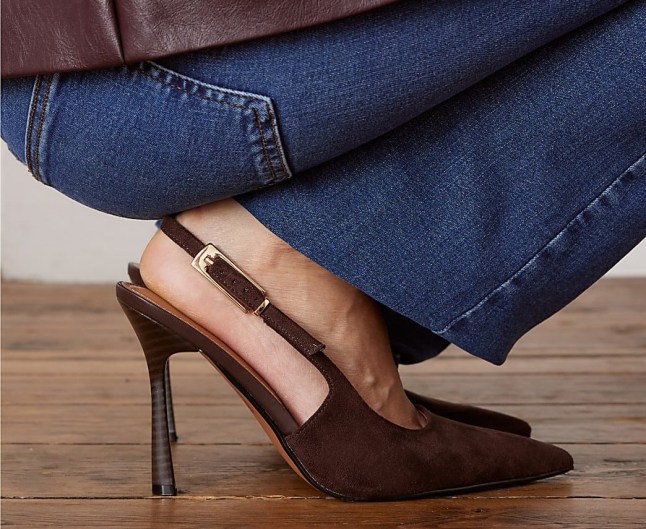
Brown Faux Suede Slingback Court Heels
Ideal for your office-to-bar evenings, these Brown Faux Suede Slingback Court Heels are a sleek, wearable pair you'll turn to again and again. Boasting a skinny heel, pointed toe and sleek ankle strap, they're set to pair perfectly with jeans, dresses and so much more.

White Cape Blazer
Sleek, sophisticated and simply stunning, this White Cape Blazer is a unique piece your wardrobe is crying out for. Boasting a cape neckline, it creates a gorgeous, flowing silhouette, while the double breasted front detailing and fitted bodice make it a flattering piece for special occasions.
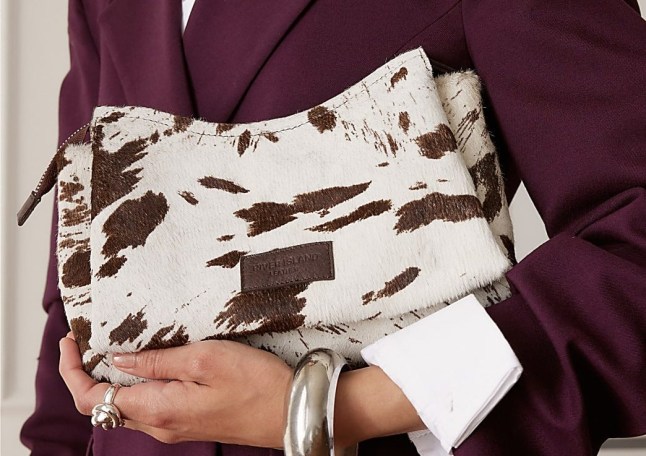
Brown Leather Animal Print Cross body bag
Lean into the timeless cow print trend with this gorgeous Brown Leather Animal Print Cross body bag. Made with real leather, it features a triple compartment design for all your essentials and zip fastenings to keep everything safe, while the crossbody strap makes it super easy to style.
This collection has so much to love…
Follow Metro across our social channels, on Facebook, Twitter and Instagram
Share your views in the comments below
11 Sep, 2025 | Admin | No Comments
Dry skin? This new body oil promises an instant glow (without the grease)
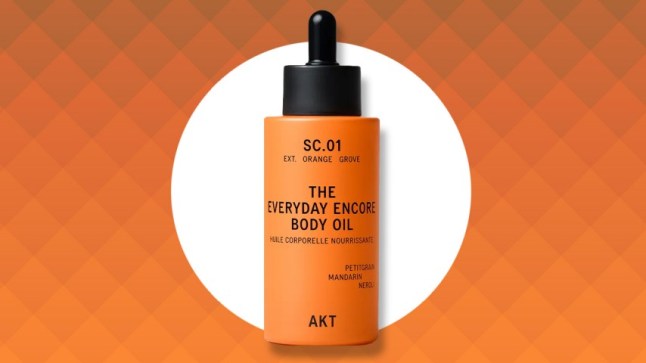
Metro journalists select and curate the products that feature on our site. If you make a purchase via links on this page we will earn commission – learn more
Winter is on our doorstep, and to ensure our skin is far from dry and chapped, AKT, our favourite natural deodorant brand, has just dropped a brand new product we need.
From the makers of the UK’s most awarded deodorant comes a brand-new body care must-have: The Everyday Encore Body Oil – AKA your shortcut to instantly softer, glowing skin.
Designed to tackle dull, dry skin that’s lost its star quality, the AKT Everyday Encore Body Oil is a non-greasy, fast-absorbing dry body oil that works to nourish, protect and leave skin with an instant and lasting glow.
Formulated with hydrating squalane, antioxidant-rich rosehip oil, and a nourishing phytocomplex of sweet almond, borage and linseed oils, this body oil transforms lacklustre skin, leaving it nourished and lit from within.
Like the original AKT deodorant, this body oil has been made with ritual moments in mind, allowing you a calming moment to indulge in the heavenly fragrance as you massage into your skin.
Available in two of the brands most loved fragrances – SC.01 Orange Grove and Sc.02 After Thunder – the oil transports you to calmer climes, giving you a confidence-boosting moment that’ll leave your skin looking better than ever.
Better still, in independent user trials on 57 subjects using the Everyday Encore Body Oil over two weeks, 91% said their skin felt more nourished, moisturised and soft, while 89% said their skin appeared more glowing and radiant.
Worried an oil will leave you slippery and greasy? Fear not, as 81% said the oil absorbed instantly into the skin, while impressed users have noted how the oil is ‘not greasy’.
Which is another thing that blew us away with this body oil: Despite being a brand new release, countless five-star reviews have already poured in from users who coin it a ‘must-have’ in their routine, raving of the skin-loving results and gorgeous smell.
‘I’m already a big fan of the Orange Grove scent so having this luxurious body oil to round off my self-care routine is just perfect,’ raved one impressed reviewer.
‘The scent lasts for ages and the oil absorbs really easily without feeling greasy. Absolutely love this new daily treat from the AKT team!’
Another added: ‘Love this! The fragrance is insane. So luxurious, long lasting. The oil is so silky and smooth, not greasy. Easily absorbed, a little goes a long way too. Leaving my skin nourished, hydrated and silky smooth. 10/10.’
‘I tried this for the first time this weekend as I was getting ready for a wedding and I genuinely was so impressed. The word oil makes you think greasy but this just wasn’t greasy in the slightest and felt so luxurious!’ Wrote a third.
‘It gave my skin a lovely glow and paired with the conditioning balm was just perfect.’
The brand recommends massaging the golden oil into freshly cleansed skin from neck to toe, focusing on areas that require slightly more attention like sore muscles or knots.
Follow Metro across our social channels, on Facebook, Twitter and Instagram
Share your views in the comments below
10 Sep, 2025 | Admin | No Comments
Best-dressed stars at the 2025 NTAs: Maya Jama, Cat Deeley & more dazzle on the red carpet

The 2025 National Television Awards saw the likes of Davina McCall, Rochelle Humes, Vogue Williams, Alison Hammond, Stacey Solomon, and more descend on The 02 Arena for the biggest night in British television – see the most incredible outfits.
Resident agony aunt Coleen Nolan has advice for a worried reader feeling very insecure in her relationship because his previous partner was so good-looking
10 Sep, 2025 | Admin | No Comments
Richard Gere and Alejandra Silva's private new $11.7m home in Spain revealed
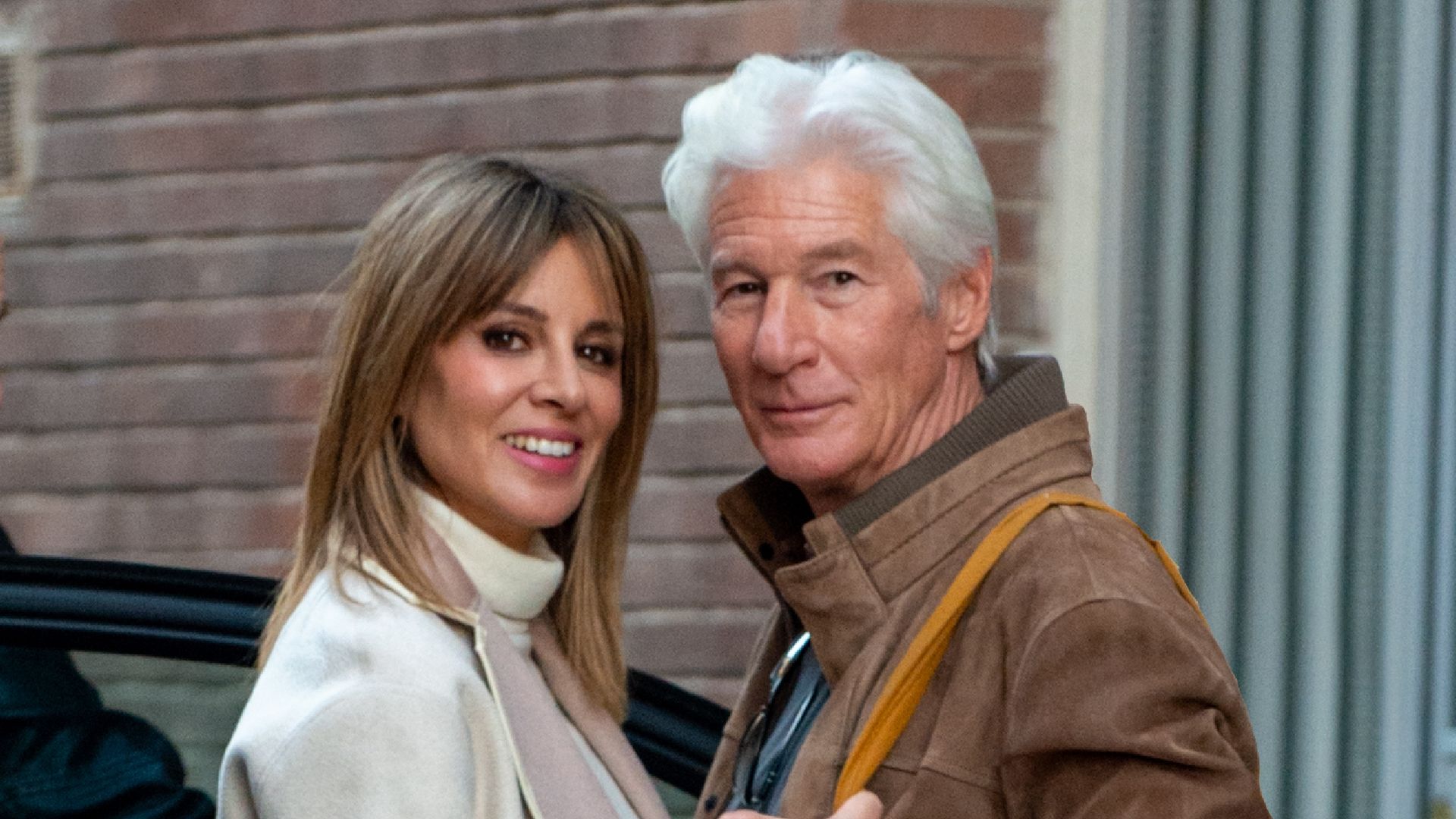
Richard Gere and his wife, Alejandra Silva, have reportedly purchased an $11.7 million home in Oleiros, a town near A Coruña, after relocating to Spain from America
10 Sep, 2025 | Admin | No Comments
Jeremy Clarkson’s stance on allergies makes me even more sick than gluten
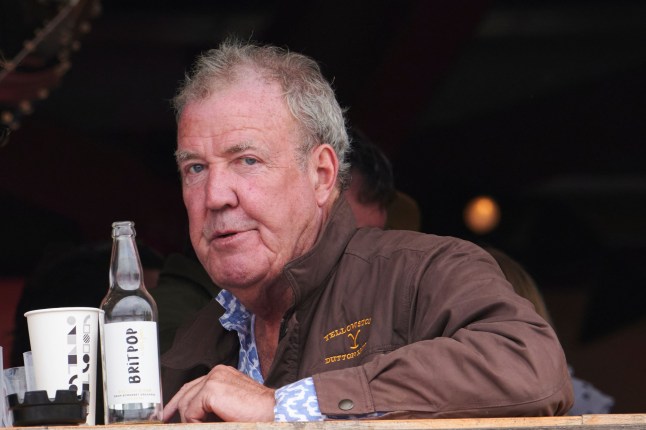

I want to preface this piece by saying that I’m a long-standing fan of Jeremy Clarkson – from his time on Top Gear and the Grand Tour, to his now endearing Clarkson’s Farm.
But his recent column in The Times has ground my gears (pardon the pun).
Apparently, he has considered banning customers with food intolerances from his pub, The Farmer’s Dog, after one woman allegedly claimed she’d been given beer instead of cider which made her ill. This, according to Clarkson, was later proven to be untrue.
He wrote: ‘Food intolerance enthusiasts will claim after they left that you poisoned them and that you must now give them 50,000 of your pounds.’
Oh, and he finds people with food intolerances ‘annoying’ apparently.
Well, news flash, Jeremy: if you own a pub it’s your job to cater to your customers, and if they have an intolerance, it’s your job to cater to that, too. You can’t set up a restaurant but discriminate against people because of something they can’t change.
This isn’t about trying to attract a certain crowd through a dress code or price list; telling me I’m not not welcome because of circumstances beyond my control.
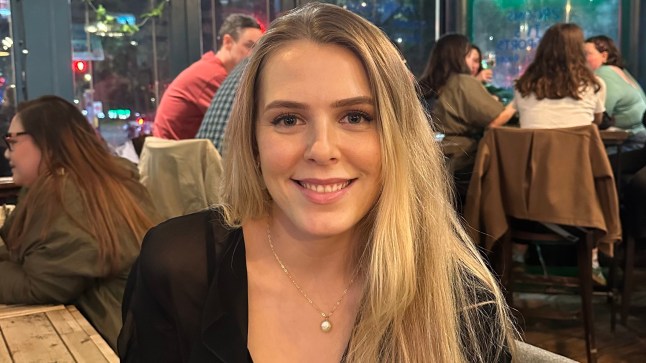
As someone with coeliac disease, my body attacks itself if I eat gluten, and walking into a pub is hard enough without knowing that someone dislikes me because of a condition I was born with.
Do you know how exhausting it is to need staff to walk me through what is and isn’t safe for me to eat (if they even had proper training on allergies and intolerances, which many haven’t), their kitchen processes, and put my health in their hands?
It’s exhausting, and public rants like Jeremy’s that shame people with food intolerances only adds to that. I feel like a burden when I simply don’t want to eat something that could make me sick and even increase my risk of cancer.
Even after all that effort I’m forced to go through, just to enjoy a meal out with friends or family, I’ve still been poisoned multiple times by pubs and restaurants alike.
To view this video please enable JavaScript, and consider upgrading to a web
browser that
supports HTML5
video
I’ve fallen ill after a popular Italian chain fried my gluten-free calamari in a contaminated fryer, meaning I was stuck in a shopping centre toilet for an entire hour, hurling my guts up.
Another establishment stuck a wafer in my gluten-free ice cream, while another fancy restaurant served my gluten-free macaroon on a bed of pearl barely.

I’ve never once asked for money from any of these places, even though I should have. It shows a disregard for customer safety, and a lack of understanding regarding diners’ needs.
But hey, I don’t want to cause a fuss at the risk of being labelled ‘annoying’.
I know when I’ve been poisoned within 30 minutes of eating gluten, with unpleasant symptoms coming on. And I’m sure I speak for everyone with an intolerance or allergy when I say the only place you want to suffer the sickness is in the comfort of your own home.
Of course, if I ate at Jeremy’s pub and knew I’d been poisoned, I’d be more than happy to stay there and throw up in front of everyone just so he knew I wasn’t trying to fool anyone – to prove the only annoying person is the one who had made me sick.
Ultimately, Jeremy’s comments are a cheap shot at the 30% of the UK population with a food hypersensitivity, 2.4 million of whom have a clinically confirmed allergy.
In fact, this disregard for people who can’t eat ‘normal food’ is tiring – do you think we choose this life of constant judgement from others? All I want is to fly under the radar and eat in peace.
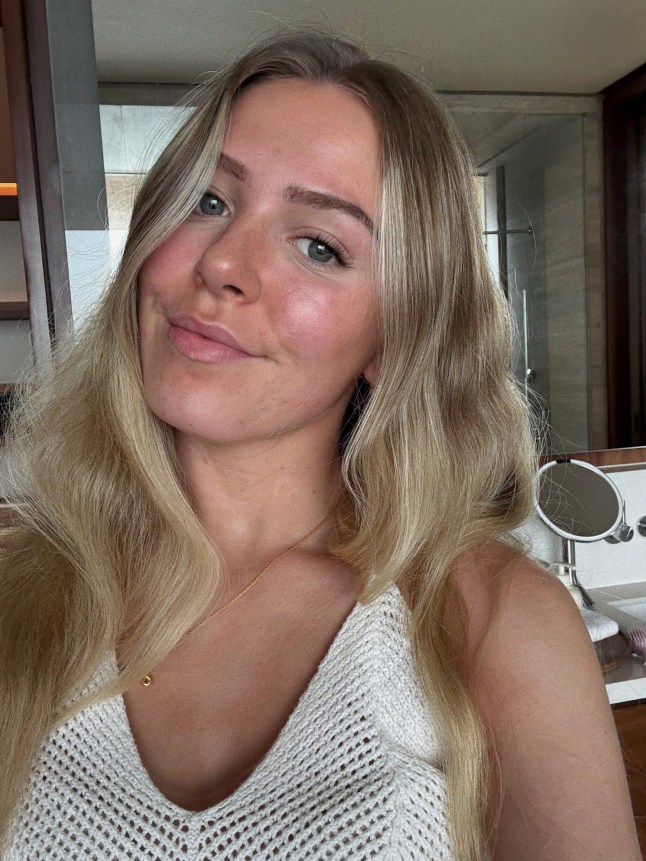
I’m no stranger to people’s distaste for my requirements. I’ve been labelled a ‘red flag’ and a wimp by men because of my allergies when I was single and on the dating scene – god forbid a guy had to check the restaurant had a gluten-free option. I’ve been dubbed ‘high maintenance’ and a ‘health freak’ by other ignorant people who believe my lifestyle is a choice.
So what, Jeremy – you felt someone tried to scam money from your pub, and you didn’t pay out. It’s a non-issue. What’s next? If a vegetarian says you served them meat when you didn’t, will veggies also be on the no entry list?
I wouldn’t be surprised if this turns out to be another Clarkson joke as he plays to his gallery, but after seven years of being the punchline, I’ve stopped laughing. That’s not to say I’ll stop enjoying Jeremy’s programmes because, unlike him, I don’t hold a grudge.
But demonising millions of people because of the alleged actions of one is overkill, and making us feel unwelcome is not funny.
This whole drama makes me sad, because I’d been so keen to go and try The Farmer’s Dog after following its story, opening on Clarkson’s Farm. I think the concept of using produce from only British farmers is great and it looks like a stunning pub.
So some simple, ‘not annoying’ advice Jeremy – you’ve made something great; don’t let your bitterness over one woman’s supposed lie, deprive people like me of the chance to come and enjoy it.
Do you have a story you’d like to share? Get in touch by emailing Ross.Mccafferty@metro.co.uk.
Share your views in the comments below.
10 Sep, 2025 | Admin | No Comments
Apple reveals the new iPhone 17 line-up – here’s everything you need to know


Metro journalists select and curate the products that feature on our site. If you make a purchase via links on this page we will earn commission – learn more
Tech giant Apple unveiled its iPhone 17 line-up this week, with four models making their debut, including the iPhone Air, the thinnest smartphone Apple’s ever made.
All four phones: iPhone 17, iPhone 17 Pro, iPhone 17 Pro Max and iPhone Air, boast longer battery life, better cameras and more storage, along with a host of other improvements.
The new models also come with the new A19 chip to power Apple’s AI features and look sleeker, faster and smarter than ever but surprisingly, it’s not the skinny iPhone Air that’s got everyone talking, it’s the iPhone 17 Pro.
Apple iPhone 17 Pro
Apple’s new iPhone 17 Pro model boasts a range of exciting new upgrades including a powerful A19 chip capable of carrying out advanced AI tasks, a sleek, durable aluminium unibody design that helps to dissipate heat more effectively, greater battery life even during video playback, a clearer, brighter screen and improved lenses on both the front and back lenses. Available in three colours: silver, cosmic orange and deep blue, it’s set to be the most impressive iPhone ever.
The iPhone will be available from the following retailers:
Available as 17 Pro and 17 Pro Max, costing from £1,099 and £1,199 respectively, the latest Pro models pack in Apple’s most advanced features yet setting them apart from the rest of the iPhone 17 line-up.
What’s the buzz about, then? Well, here’s five of the biggest changes Apple has made to the new Pro models that we’re seriously impressed with.
The new A19 Chip
It might sound like tech genius speak but simply put, the new A19 chip acts like the iPhone’s brain. It’s Apple’s most powerful processor yet meaning your phone is able to take on even the most demanding tasks with ease.
It also makes the Pro compatible with Apple’s AI features so users can ask their phone to do lots of tasks like reply to emails and retouch photos, all while staying fast and efficient.

Aluminium Unibody design
Apple has moved away from the titanium frame used on the iPhone 15 Pro and 16 Pro (but still found on the new iPhone Air) and introduced a new aluminium unibody design for both Pro models.
It means improved durability and, according to Apple, improved thermal performance by helping the phone manage heat more efficiently.
Inside the Pros is also a vapour chamber where sealed water works to move heat away from the A19 chip, so your phone won’t overheat as easily – cool, huh?
Improved battery life
Sick of charging your phone every couple of hours? Apple claims the iPhone 17 Pro Max delivers up to 37 hours of video playback – the longest battery life ever offered on an iPhone. In comparison, the iPhone 17 Pro is rated for 31 hours, the standard iPhone 17 for 30 hours, and the slim iPhone Air for 27 hours.
According to Apple, the improvement is thanks to the unibody aluminium design, which allows for a larger battery, combined with the efficiency of the new A19 Pro chip and the advanced power management features in iOS 26.
Both Pro models also support fast charging, reaching up to 50% charge in just 20 minutes when using a high-wattage USB-C adapter.

Better camera quality
The iPhone 17 Pro’s main, ultra-wide, and telephoto lenses all get bumped to 48MP, with Apple calling it like having ‘eight pro lenses in your pocket.’
However, not everything is a clear improvement. The telephoto lens now offers 4x optical zoom, a slight step down from the 5x optical zoom found in the iPhone 16 Pro. While Apple promotes the 17 Pro as offering “optical-quality” 8x zoom, this is achieved through digital cropping beyond the 4x range, rather than true optical zoom.
The new front camera is also seeing upgrades and now features a square sensor, letting you switch between portrait and landscape without turning the phone making it perfect for selfies and videos.
Plus, Centre Stage smart tracking now works on the iPhone, keeping you centred during FaceTime calls just like on iPads and Macs.
Brighter, clearer screen
The iPhone 17 Pro and Pro Max feature 6.3-inch and 6.9-inch displays, now protected by Ceramic Shield 2, which Apple claims offers 3x better scratch resistance than before.
Both screens also feature a new anti-reflective coating to help cut down on glare which should make the display easier to see in bright light.
Whether you’re due an upgrade or simply want the best iPhone Apple has ever made, the iPhone 17 Pro and Pro Max really deliver.
Pre-orders open on the 12 September and hitting stores from 19 September, these models are expected to be in high demand. So, if you want cutting-edge tech with a premium feel, this is the iPhone to get.
Follow Metro across our social channels, on Facebook, Twitter and Instagram
Share your views in the comments below
10 Sep, 2025 | Admin | No Comments
Zara Tindall reveals how to style 'versatile' barrel jeans in your 40s – the royal way
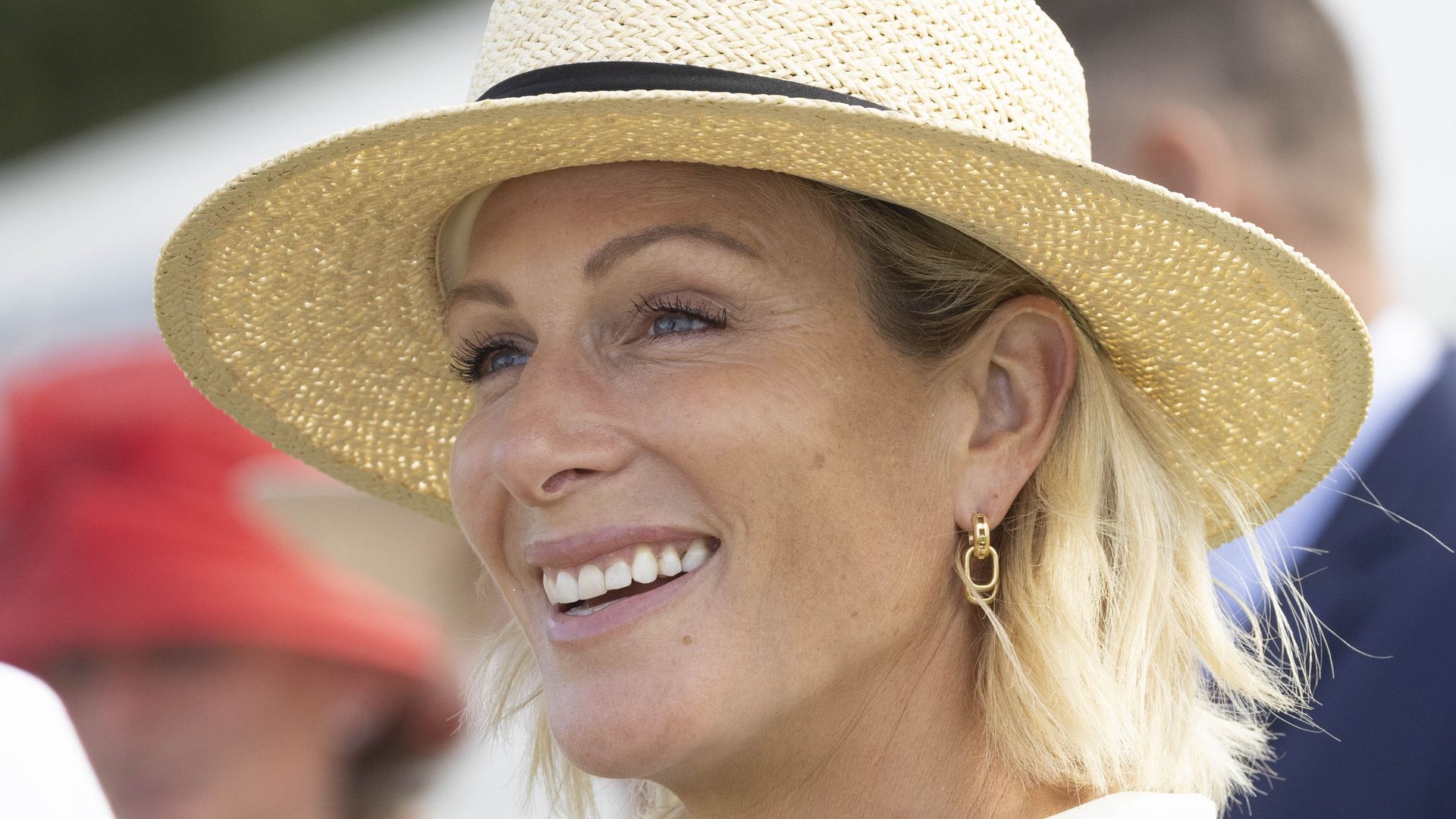
Princess Anne’s daughter Zara Tindall showed royal fans exactly how to style barrel jeans in your 40s when she attended day two of the Burghley Horse Trials.
